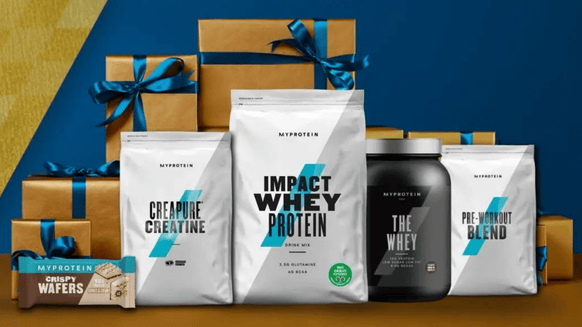
IIFYM stands for “If It Fits Your Macros”, which is a way of eating that allows you to diet in a flexible way. When it comes to losing weight, the evidence shows that the most important factor is being in a calorie deficit whilst keeping your protein intake high enough to prevent the loss of lean muscle mass. Sounds simple enough, right?
IIFYM is the way to make this happen whilst still enjoying some of your favourite foods. Sound too good to be true? The following article will discuss the pros and cons of following this approach. So, let’s find out if it can really work.
In this article, you'll find:
What is IIFYM?
How to calculate your Basal Metabolic Rate (BMR)
How to work out your macros
Benefits of IIFYM
Drawbacks of IIFYM
What is it?
IIFYM is essentially a self-monitoring tool where you track the calories and macronutrient composition of your diet.1 Macronutrients are the three main suppliers of nutrients from your food — protein, carbohydrates, and fats.
It follows the premise that as long as you hit your calories and macronutrient numbers, then you’ll lose body fat.1 This means that you can still include your favourite foods, in the right quantity and ratio, yet still improve your physique.
Calculate your BMR
Firstly, you have to work out your basal metabolic rate (BMR) which is the number of calories your body needs at rest. Imagine you stayed in bed all day and didn’t move a muscle — that’s pretty much it.
In order to estimate your BMR, there are a number of different equations you can use. The accuracy of them will depend on how closely you match up to the population group in which the equation was calculated.2,3 An example of an RMR equation is the Miffin-St Jeur, which works as follows:
Physical Activity level
Once you have your BMR value you need to factor in the amount of activity you do. This is known as your Physical Activity Level (PAL).5 This can range between 1.2 for sedentary individuals and 2.0 for those who are very active. To get an estimate of your total daily energy expenditure, multiple the number worked out in the above equation by 1.2-2.0 depending on your activity level.
Desired weight
You then need to work out your calorie deficit depending on how quickly you want to lose the weight. However, the more aggressive you drop your calories the more likely you will lose lean body mass.4 A daily calorie deficit of around 500kcals is a good starting point.
Calculate your daily macros
Once you have calculated your calories you then need to break this down into the macronutrient composition — protein, carbohydrates, and fats.
Here is how to calculate your macros. (To make this easier we will follow the example of a 25-year old, 185cm tall, 80kg male):
First set your protein target. Research has shown that a high protein will help maintain muscle mass whilst in an energy deficit. 2.0g per kg of bodyweight is good target.4 Protein contains 4 calories per gram, so multiply your protein intake by 4. For example, in our 80kg male, the protein number would 160g, and 640kcals. For health reasons, it’s advised that your fat intake should be around 20-35% of your daily intake.6 In terms of body weight recommendations, this will work out at around 1.0g per kilogram. For an 80kg individual, this would mean 80g fat and 720 calories as there are 9 calories per gram of fat. - To then work out your carbohydrate intake, add the calories of protein and fat together and see how much of your calorie target you have remaining. In this example, our 80kg individual this would be 1,360 kcals.
Based on the BMR number (1828kcals - worked out by the above BMR equation), a moderate physical activity factor of 1.4 and 500 daily calorie deficit, his total daily calories would be 2070kcals). To work out the grams of carbohydrates, divide the remaining calories by 4, which is the amount of calories per gram there are in carbs. (2070 – 1360 = 710). 710/4 = 178g of carbohydrates.
— 2070 kcal
— 160g Protein (2.0g/kg/d)
— 80g Fat (1.0g/kg/d)
— 178g Carbohydrates
Benefits of IIFYM:
1. Flexible
The main benefit of IIFYM is the flexibility it provides. This means it will likely make it easier to stick to the diet, which is one of the most important factors in reaching your goals.2 For example, providing your daily eating hits the right macronutrient number, it may allow for you eat the things you enjoy that wouldn’t necessarily be considered healthy. In our example above, a typical chocolate bar would account for 10g of fat and 260kcals. Providing the rest of the day’s food didn’t exceed 80g of fat or 2070kcals, theoretically, this wouldn’t affect fat loss.
This is relevant as in order to get the best results, body compositional changes need to happen over a sustained period of time.
Consequently, calorie deficits should be modest to ensure you maintain as much lean body mass as possible — even if it means it takes a little longer. The more aggressively you drop your daily calories, the more likely it is you will lose muscle mass. So, to be successful you need to be able to stick to your diet for long enough.
This is where the element of flexibility is so important. Eliminating your favourite foods for long periods can be very difficult. There are numerous psychological factors that come into play when following a diet and restricting your favourite foods doesn’t help.1 Sustained periods of restriction can potentially lead to periods of ‘binge’ eating which can substantially affect progress.4
Essentially, following a diet that accounts for your food preferences can help you follow it for the time it takes to get great results and reduce the risk of the weight coming back on.
2. Evidence backs it up
There is a vast amount of evidence that shows when it comes to losing weight and body fat the most important factor is being in a negative energy balance.4 This means you expend more calories than you consume.
Being in a negative energy balance means that your body will use its stored energy, i.e fat stores, resulting in an overall drop in weight.4 Following IIFYM correctly will also ensure that your protein intake is high, which will mean that less muscle mass is lost in the long term. This makes it better than just following an energy-restricted diet with no regard for the macronutrient composition.4
3. Can be educational
If you follow IIFYM for a period of time it will likely help teach what food looks like in terms of its macronutrient and calorie content. This should hopefully help long term when it comes to following a diet plan.
It’s often surprising how many calories are in your preferred foods, regardless of whether you deem them to be healthy or not. For example, an avocado, which provides an abundance of vitamins and minerals and healthy fats, 1 medium avocado contains approximately 240kcals. Even though avocados provide healthy nutrition, if they are causing you to be in a positive energy balance it will result in weight gain.
Learning the composition of foods can help when it comes to planning your daily and weekly meals, knowing when to make adjustments and what to account for. This may lead to sustained weight loss as you will be more aware of what foods are likely to prevent you from making progress.
Drawbacks
1. Extensive tracking
In order to make sure you’re getting your numbers right, you’ll need to be consistently tracking —not just calories but the macronutrients as well. This isn’t for everyone and it can be difficult to keep up every day.
This kind of tracking isn’t necessarily needed in order to lose weight. By creating good lifestyle habits you can put yourself in the required deficit without having to track each individual macronutrient or even your calorie intake. For example, cutting back on alcohol intake and reducing portion sizes can be enough to put people in an energy deficit that will not require all the tracking.
In some cases, the extensive tracking can be quite stressful and if you have a hectic schedule it can be difficult to do every day. This can limit the accuracy of your dietary reporting. For example, filling in a food diary a day later can often mean things are missed.5
It’s worth noting that IIFYM originates from the bodybuilding community where those following the diet are highly motivated and likely to be experienced Dieters. For those new to a weight loss plan, and who are just looking to drop a few pounds, IIFYM may not be the easiest plan to start with straight away.
2. Accuracy of tracking mechanism
In addition to the time-consuming nature of tracking, there is also the element of accuracy. Although some apps having the capacity to scan bar codes has made tracking a lot easier, there is still room for error.
In a study looking at the usage of one food tracking app in a real-life setting, participants underreported their food intake by as much as 445 kcals on average.5 This was due to foods being omitted such as condiments, cooking oils, and beverages consumed between meals.
Failing to report all food and drink consumed could significantly affect overall daily calorie content and mean you might actually be eating a lot more than you think which will completely alter the outcome of your diet plan.
Additionally, some of the foods you may well treat yourself to, such as ice cream or pizza can be high in calories making it all the more important to ensure portion sizes are entered correctly when tracking, as eating too much can happen quite easily.
In order to improve the accuracy of your tracking mechanism, be sure to complete it in real-time and be sure to include all cooking oils, condiments, drinks and milk in tea and coffee.
3. Food isn’t just about numbers
Food doesn’t just contain proteins, fats and carbs. Food includes a host of other things that can be both harmful and beneficial.
For example, micronutrients form an essential part of your diet and are abundant in food sources such as vegetables and fruits. Although IIFYM takes care of the most important factors of weight loss, i.e. energy balance and macronutrient composition, it doesn’t place much emphasis on the vital micronutrients. This was highlighted in a recent study performed in Bodybuilders following an IIFYM plan where over half the participants consumed less than the recommended amounts of several micronutrients.1
This is important as micronutrients can’t be synthesized by the body and must be obtained in the diet.7 Micronutrients include all vitamins and minerals which are required to stay healthy and prevent illness and disease.
There’s also an emerging theory that micronutrient deficiency can increase feelings of hunger. It has been proposed that this is due to your body ‘craving’ these micronutrients and the need to eat to acquire these is therefore increased. For example, if you are deficient in calcium, your body will crave the kind foods that are abundant in calcium.8
Take-Home Message
IIFYM can be a useful way of eating that allows for flexibility and therefore improving adherence when following a diet plan. However, caution should be taken when tracking the intake of your diet and it’s important to ensure you are still getting adequate amounts of micronutrients in your diet.

1. Ismaeel, A., Weems, S. and Willoughby, D. (2018). A Comparison of the Nutrient Intakes of Macronutrient-Based Dieting and Strict Dieting Bodybuilders. International Journal of Sport Nutrition and Exercise Metabolism, 28(5), pp.502-508.
2. Frankenfield, D., Roth-Yousey, L. and Compher, C. (2005). Comparison of Predictive Equations for Resting Metabolic Rate in Healthy Nonobese and Obese Adults: A Systematic Review. Journal of the American Dietetic Association, 105(5), pp.775-789.
3. Lee, S. and Kim, E. (2012). Accuracy of Predictive Equations for Resting Metabolic Rates and Daily Energy Expenditures of Police Officials Doing Shift Work by Type of Work. Clinical Nutrition Research, 1(1), p.66.
4. Aragon, A., Schoenfeld, B., Wildman, R., Kleiner, S., VanDusseldorp, T., Taylor, L., Earnest, C., Arciero, P., Wilborn, C., Kalman, D., Stout, J., Willoughby, D., Campbell, B., Arent, S., Bannock, L., Smith-Ryan, A. and Antonio, J. (2017). International society of sports nutrition position stand: diets and body composition. Journal of the International Society of Sports Nutrition, 14(1).
5. Westerterp, K. (2017). Doubly labelled water assessment of energy expenditure: principle, practice, and promise. European Journal of Applied Physiology, 117(7), pp.1277-1285.
6. Liu, A., Ford, N., Hu, F., Zelman, K., Mozaffarian, D. and Kris-Etherton, P. (2017). A healthy approach to dietary fats: understanding the science and taking action to reduce consumer confusion. Nutrition Journal, 16(1).
7. Chen, J., Berkman, W., Bardouh, M., Ng, C. and Allman-Farinelli, M. (2019). The use of a food logging app in the naturalistic setting fails to provide accurate measurements of nutrients and poses usability challenges. Nutrition, 57, pp.208-216.
8. SMITH, C., WILLIAMSON, D., BRAY, G. and RYAN, D. (1999). Flexible vs. Rigid Dieting Strategies: Relationship with Adverse Behavioral Outcomes. Appetite, 32(3), pp.295-305.
9. Biesalski Hans, K. and Jana, T. (2018). Micronutrients in the life cycle: Requirements and sufficient supply. NFS Journal, 11, pp.1-11.
10. Aytekin, N., Godfri, B. and Cunliffe, A. (2019). ‘The hunger trap hypothesis’: New horizons in understanding the control of food intake. Medical Hypotheses, 129, p.109247.






